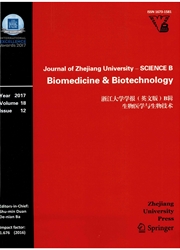

 中文摘要:
中文摘要:
目的:临床上锁骨下静脉导管误入颈内静脉时有发生,但错误导管位置是否对PiCCO监测数据结果有影响,从而导致临床医生对患者病情出现误判目前尚不清楚。本研究的主要目的是观察错误导管位置对PiCCO数据(如全心舒张末容积指数(GEDVI)、血管外肺水指数(ELwI)、胸腔内血容积指数(ITBⅥ)和心指数(CD)的影响。创新点:目前临床医生对锁骨下静脉导管的位置不够重视,更不会了解错误导管对临床血流动力学监测的影响,从而做出错误的临床决策。本研究提出错误导管位置对PiCCO数据的影响,再次强调确认正确锁骨下静脉导管位置的重要性,并提出如何判断导管在正确位置的床边小技巧。方法:本研究回顾性分析13例重症胰腺炎病人接受错误导管位置的PiCCO测量后,与正确位置导管的PiCCO数据进行对比,分析错误导管位置对PiCCO数据包括GEDVI、ELWI、ITBVI和CI的影响。结论:错误的锁骨下静脉导管导致GEDVI和ITBVI数据偏高,而对CI及ELWI的影响无统计学意义,因此,正确的导管位置对临床PiCCO监测的数据很重要。
 英文摘要:
英文摘要:
Objective: The subclavian vein (SCV) is usually used to inject the indicator of cold saline for a transpul- monary thermodilution (TPTD) measurement. The SCV catheter being misplaced into the internal jugular (IJV) vein is a common occurrence. The present study explores the influence of a misplaced SCV catheter on TPTD variables. Methods: Thirteen severe acute pancreatitis (SAP) patients with malposition of the SCV catheter were enrolled in this study. TPTD variables including cardiac index (CI), global end-diastolic volume index (GEDVI), intrathoracic blood volume index (ITBVI), and extravascular lung water index (EVLWl) were obtained after injection of cold saline via the misplaced SCV catheter. Then, the misplaced SCV catheter was removed and IJV access was constructed for a further set of TPTD variables. Comparisons were made between the TPTD results measured through the IJV and mis- placed SCV accesses. Results: A total of 104 measurements were made from TPTD curves after injection of cold saline via the IJV and misplaced SCV accesses. Bland-Altman analysis demonstrated an overestimation of +111.40 ml/m2 (limits of agreement: 6.13 and 216.70 ml/m2) for GEDVI and ITBVI after a misplaced SCV injection. There were no significant influences on CI and EVLWI. The biases of +0.17 L/(min.m2) for CI and +0.17 ml/kg for EVLWI were re- vealed by Bland-Altman analysis. Conclusions: The malposition of an SCV catheter does influence the accuracy of TPTD variables, especially GEDVI and ITBVI. The position of the SCV catheter should be confirmed by chest X-ray in order to make good use of the TPTD measurements.
 同期刊论文项目
同期刊论文项目
 同项目期刊论文
同项目期刊论文
 期刊信息
期刊信息
